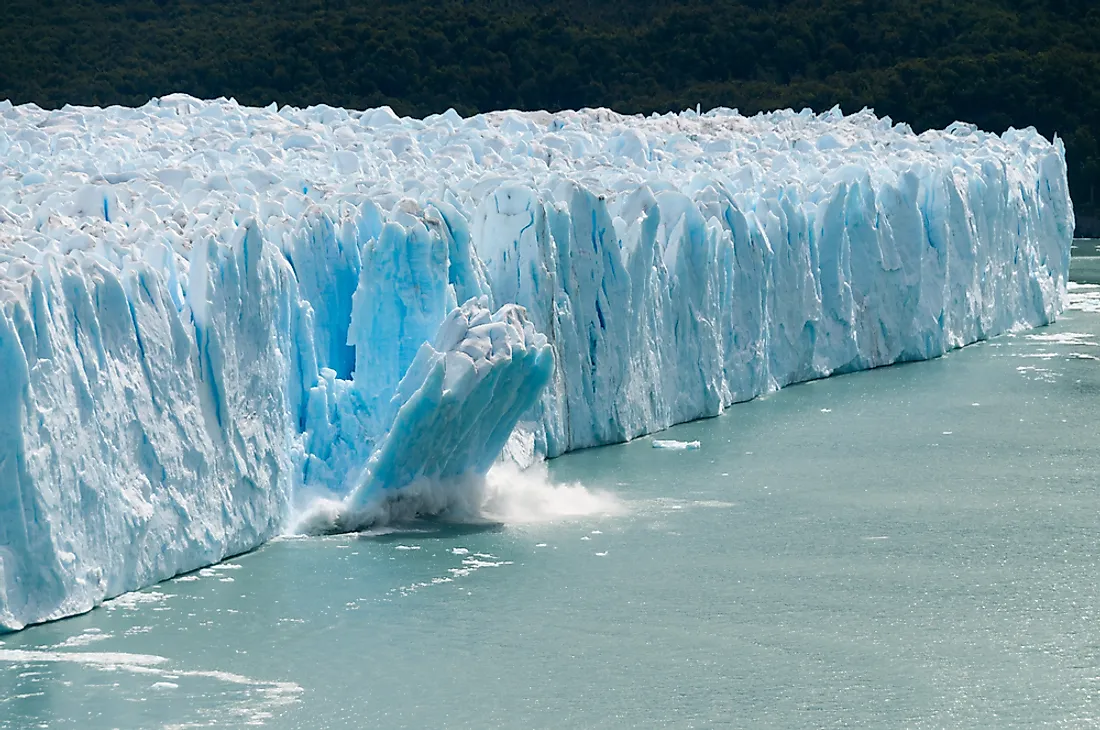What Causes a Glacier to Retreat?

Glaciers are formed when several layers of snow accumulate into a large body of dense ice. Weight from the outermost layers exerts pressure on the lower layers, therefore compacting them. The exposed layers continue to grow through a process of accumulation, which may take several centuries. When snow is continuously compressed, it re-crystallizes to form grains similar in shape and size to sugar grains. A glacier retreats or shrinks through melting or when the evaporation process exceeds the rate of accumulation of snow, which is also known as ablation or wastage.
Solar Radiation
The melting of glaciers depends on a variety of factors, the most important of which is the amount of solar radiation hitting the ice. Glaciers deflect up to 80% of solar radiation (sunlight), while absorbing the rest. When a glacier melts completely, it exposes the earth’s surface, and this has the opposite effect, meaning that 80% of heat is absorbed and 20% is deflected. Increased radiation increases melting rates, causing glaciers to shrink.
Global Warming
Statistics predict future levels of glacier loss will reach an all-time high. Global warming creates temperature increases, causing glaciers to melt faster. Studies show that human-caused global warming is the leading cause of glacier retreat. Glacier retreat results in a variety of negative consequences, including increased sea levels, floods, and fresh water shortages. When ice glaciers melt faster, temperatures rise further, and more glaciers shrink, which creates a vicious cycle that is significantly changing the climate across the globe.
Calving
The terminus of a glacier is the weakest and develops crevasses and cracks in the surface that may cause chunks of the glacier to suddenly break off. This process is called calving, and is a natural process caused by glacier expansion. This is the primary cause of avalanches, and the chunks form icebergs that float off and eventually melt, and may cause floods and glacial tsunamis. While calving cannot be controlled, recent high-temperature levels reduce the ability of snow to form on glaciers, leading to the weakening of the outer layers, and causes them to break off. Therefore, global warming is ultimately the primary cause of this process.
Glacial Till
Glacial till is an unsorted mass of material which is picked up by moving glaciers, and could include materials ranging from massive boulders to silt. Boulders insulate the ice, while the surrounding unprotected ice melts. The smaller materials create melt features such as dirt cones, which are thin layers of soil or sediment formed over an elevated part of a glacier, and usually in the shape of a cone. Cryoconite holes are small vertical shafts formed when dark materials are heated by the sun and melt into the glacier. Dark material on the surfaces of a glacier will alter the melting rate, therefore reducing its size.
Significance of Glaciers
Glaciers play a significant role as reservoirs of water, habitats for species, enhancing electric power generation, as well as serving as tourist destinations. The balance between the advance and ablation of glaciers, termed as mass balance (or budget), is an essential measure in sustaining Earth’s ecosystem. Glacial shrinking is higher today than it has been in the last 100 years. It is estimated that the Arctic could be ice-free by 2040 if the current rate of glacial melting is not stopped.











